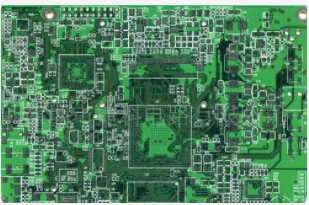In the 5G scenario, the PCB industry faces new challenges
1. Requirements for materials
A very clear direction for 5G PCB is high-frequency and high-speed materials and board manufacturing. Wu Jun, vice president of research and development of Yibo Technology, pointed out that in terms of high-frequency materials, it is obvious that leading material manufacturers in traditional high-speed fields such as Lianmao, Shengyi, and Panasonic have begun to deploy high-frequency plates and launched a series of new Material. This will break the current Rogers dominance in the field of high-frequency panels. After healthy competition, the performance, convenience and availability of materials will be greatly enhanced. The localization of high-frequency materials is an inevitable trend.
In terms of high-speed materials, Wu Yuanli, purchasing manager of Xingsen Technology, believes that 400G products need to use M7N, MW4000 equivalent grade materials. In the backplane design, M7N is already the lowest loss option. In the future, backplanes/optical modules with larger capacity will require lower loss materials. The combination of resin, copper foil, and glass cloth will achieve the best balance between electrical performance and cost. In addition, the number of high-levels and high density will also bring reliability challenges.
2. Requirements for PCB design

According to relevant sources in the industry, 5G's requirements for PCB design are mainly manifested in that the selection of plates must meet the requirements of high-frequency and high-speed, impedance matching, stacking planning, wiring spacing/holes, etc. must meet the signal integrity requirements. You can start from the six aspects of loss, embedding, high-frequency phase/amplitude, mixing, heat dissipation, and PIM.
3. Requirements for the manufacturing process
The enhancement of 5G-related application product functions will increase the demand for high-density PCBs, and HDI will also become an important technical field. Multi-level HDI products and even products with any level of interconnection will be popularized, and new technologies such as buried resistance and buried capacitance will also have more and more applications.
In addition, PCB copper thickness uniformity, line width accuracy, interlayer alignment, interlayer dielectric thickness, control accuracy of back drilling depth, and plasma de-drilling ability are all worthy of in-depth study.
4. Requirements for equipment and instruments
High-precision equipment and pre-processing lines with less roughening of the copper surface are currently ideal processing equipment; and the testing equipment includes passive intermodulation testers, flying probe impedance testers, loss test equipment, etc.
The industry believes that sophisticated graphics transfer and vacuum etching equipment can monitor and feedback data changes in real-time line width and coupling distance detection equipment; electroplating equipment with good uniformity, high-precision lamination equipment, etc. can also comply with 5G PCB Production needs.
5. Requirements for quality control
Due to the increase of 5G signal rate, the board-making deviation has a greater impact on the signal performance, which requires stricter control of the board-making production deviation, and the current mainstream board-making process and equipment are not updated, which will become the future technology development. Bottleneck. How to break the situation for PCB manufacturers is of utmost importance.